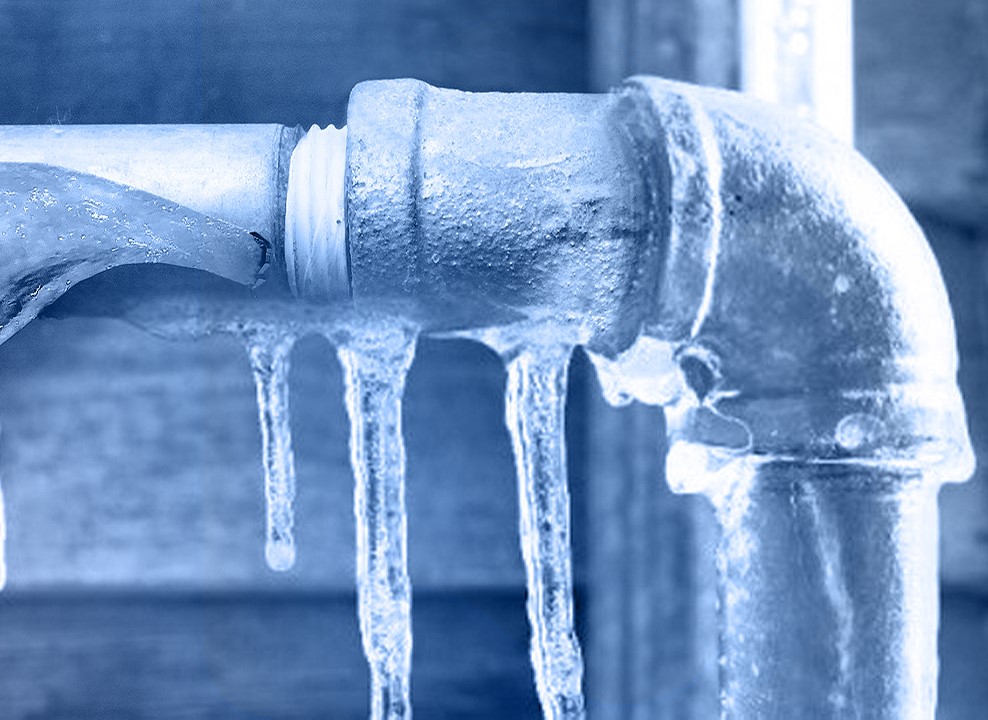Crucial Advice to Avoid Frozen Pipes in Winter: Specialist Guidance
Crucial Advice to Avoid Frozen Pipes in Winter: Specialist Guidance
Blog Article
What're your thoughts about How to Prevent Your Pipes From Freezing?

Winter can damage your pipes, particularly by freezing pipes. Below's exactly how to avoid it from occurring and what to do if it does.
Introduction
As temperature levels decline, the danger of frozen pipes rises, possibly resulting in expensive repair work and water damage. Recognizing exactly how to prevent icy pipes is crucial for home owners in chilly environments.
Prevention Tips
Protecting at risk pipes
Cover pipes in insulation sleeves or utilize heat tape to secure them from freezing temperature levels. Focus on pipelines in unheated or external areas of the home.
Home heating techniques
Maintain indoor spaces effectively warmed, especially areas with pipes. Open up cabinet doors to permit cozy air to flow around pipelines under sinks.
Exactly how to determine frozen pipes
Search for decreased water flow from taps, uncommon odors or sounds from pipes, and visible frost on exposed pipelines.
Long-Term Solutions
Architectural modifications
Consider rerouting pipes far from exterior walls or unheated locations. Add additional insulation to attics, cellars, and crawl spaces.
Upgrading insulation
Buy top notch insulation for pipelines, attics, and walls. Correct insulation helps keep constant temperature levels and lowers the danger of icy pipelines.
Shielding Exterior Pipes
Yard tubes and exterior faucets
Disconnect and drain pipes garden hoses before winter. Set up frost-proof faucets or cover outdoor taps with shielded caps.
Comprehending Icy Pipelines
What causes pipes to ice up?
Pipelines freeze when subjected to temperature levels listed below 32 ° F (0 ° C) for extended periods. As water inside the pipes ices up, it expands, putting pressure on the pipe wall surfaces and possibly creating them to break.
Threats and damages
Frozen pipes can cause water disturbances, home damage, and costly repair work. Burst pipes can flooding homes and create extensive architectural damages.
Signs of Frozen Pipes
Identifying frozen pipes early can stop them from rupturing.
What to Do If Your Pipelines Freeze
Immediate activities to take
If you believe frozen pipelines, keep taps available to relieve stress as the ice melts. Utilize a hairdryer or towels soaked in warm water to thaw pipelines slowly.
Conclusion
Protecting against frozen pipelines calls for positive actions and quick actions. By recognizing the causes, indications, and safety nets, house owners can protect their plumbing throughout winter.
5 Ways to Prevent Frozen Pipes
Drain Outdoor Faucets and Disconnect Hoses
First, close the shut-off valve that controls the flow of water in the pipe to your outdoor faucet. Then, head outside to disconnect and drain your hose and open the outdoor faucet to allow the water to completely drain out of the line. Turn off the faucet when done. Finally, head back to the shut-off valve and drain the remaining water inside the pipe into a bucket or container. Additionally, if you have a home irrigation system, you should consider hiring an expert to clear the system of water each year.
Insulate Pipes
One of the best and most cost-effective methods for preventing frozen water pipes is to wrap your pipes with insulation. This is especially important for areas in your home that aren’t exposed to heat, such as an attic. We suggest using foam sleeves, which can typically be found at your local hardware store.
Keep Heat Running at 65
Your pipes are located inside your walls, and the temperature there is much colder than the rest of the house. To prevent your pipes from freezing, The Insurance Information Institute suggests that you keep your home heated to at least 65 degrees, even when traveling. You may want to invest in smart devices that can keep an eye on the temperature in your home while you’re away.
Leave Water Dripping
Moving water — even a small trickle — can prevent ice from forming inside your pipes. When freezing temps are imminent, start a drip of water from all faucets that serve exposed pipes. Leaving a few faucets running will also help relieve pressure inside the pipes and help prevent a rupture if the water inside freezes.
Open Cupboard Doors
Warm your kitchen and bathroom pipes by opening cupboards and vanities. You should also leave your interior doors ajar to help warm air circulate evenly throughout your home.
:strip_icc()/snow-outdoor-faucet-pipes-4af65d1e5e904fb1aa7bf74071fe5d89.jpg)
We had been shown that article on 6 Ways to Prevent Frozen Pipes from an associate on our other domain. Enjoyed reading our piece? Please quickly share it. Let others locate it. Kudos for your time. Don't forget to stop by our website back soon.
Get A Quote Report this page